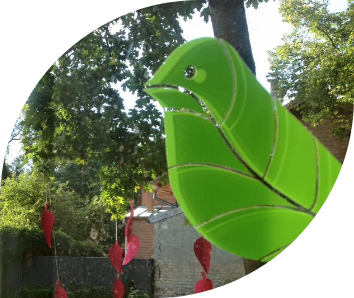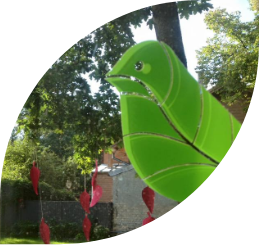Children must have the opportunity to influence the learning process and explore the world through all the senses as they communicate and express their personality.
We are the first preschool in Latvia to use the Reggio Emilia Approach.
The child’s vision of the world.
Children form their personalities and understanding of themselves and the world in interaction with the environment. This allows the child to be creative in the learning process, ask questions, find answers and use non-verbal language in various ways: theatre, painting and drawing, shaping objects, dance, music, construction and handicrafts.
The child’s vision of the world.
Projects and the teacher’s role.
The Reggio Emilia Approach uses the project method. Planned in advance, projects evolve fluidly during the learning process based on the child’s current interests and questions. The opinion of each participant receives equal importance in the games and group work done during the project. The teacher is an attentive companion who listens to what the child is saying, follows their interests and provides the necessary assistance in achieving the child’s goal.
Projects and the teacher’s role.
The child’s vision of the world.
Children form their personalities and understanding of themselves and the world in interaction with the environment. This allows the child to be creative in the learning process, ask questions, find answers and use non-verbal language in various ways: theatre, painting and drawing, shaping objects, dance, music, construction and handicrafts.
The child’s vision of the world.
Projects and the teacher’s role.
The Reggio Emilia Approach uses the project method. Planned in advance, projects evolve fluidly during the learning process based on the child’s current interests and questions. The opinion of each participant receives equal importance in the games and group work done during the project. The teacher is an attentive companion who listens to what the child is saying, follows their interests and provides the necessary assistance in achieving the child’s goal.
Projects and the teacher’s role.
The environment is the third teacher.
The Reggio Emilia environment is filled with natural light and order, using natural materials. The environment changes as the child grows. Each subject or teaching material is used to encourage children to go deeper and continue exploring. The language of the environment involves playing with textures, sounds, rhythm and light. The environment contains natural materials, tools and household items, with the help of which children can feel others’ trust and their reliance on their abilities. The environment is created and cared for by everyone, adults and children.
The environment is the third teacher.
Community and parental involvement in school life.
The Reggio Emilia Approach involves the active and responsible involvement of parents in school life. Serving as role models for children developing their social and emotional competencies, parents form relationships with children, other parents and the teacher and develop a sense of the school environment. For the child, this cooperation provides support and security. For the parents, it is the opportunity to pass on their best experience to the children and continue the work started at school in the home environment. Children explore the world by interconnecting experiences, concepts and phenomena. At home, parents help their children continue what they started at school while developing their cooperation with teachers and a closer relationship with the child.
Community and parental involvement in school life.
The environment is the third teacher.
The Reggio Emilia environment is filled with natural light and order, using natural materials. The environment changes as the child grows. Each subject or teaching material is used to encourage children to go deeper and continue exploring. The language of the environment involves playing with textures, sounds, rhythm and light. The environment contains natural materials, tools and household items, with the help of which children can feel others’ trust and their reliance on their abilities. The environment is created and cared for by everyone, adults and children.
The environment is the third teacher.
Community and parental involvement in school life.
The Reggio Emilia Approach involves the active and responsible involvement of parents in school life. Serving as role models for children developing their social and emotional competencies, parents form relationships with children, other parents and the teacher and develop a sense of the school environment. For the child, this cooperation provides support and security. For the parents, it is the opportunity to pass on their best experience to the children and continue the work started at school in the home environment. Children explore the world by interconnecting experiences, concepts and phenomena. At home, parents help their children continue what they started at school while developing their cooperation with teachers and a closer relationship with the child.
Community and parental involvement in school life.
Documentation.
The Reggio Emilia Approach has a strong focus on the careful documentation of the child’s thoughts, ideas and actions in notes, images, their explanations, etc. in ways that reflect the child’s cognitive and learning processes. Documentation is both an insight into and a look back at the day-to-day activities at the school for the child, teachers, parents and others.
Documentation.
Teachers as children.
Children are researchers and persistent explorers of the world. This concept, a curious child, also applies to teachers. The Reggio Emilia Approach is based on the belief that the teacher is constantly improving him or herself, cooperating not only with the child, but also with teachers in other fields (musicians, scholars, actors, artists, scientists, etc.).
Teachers as children.
Documentation.
The Reggio Emilia Approach has a strong focus on the careful documentation of the child’s thoughts, ideas and actions in notes, images, their explanations, etc. in ways that reflect the child’s cognitive and learning processes. Documentation is both an insight into and a look back at the day-to-day activities at the school for the child, teachers, parents and others.
Documentation.
Teachers as children.
Children are researchers and persistent explorers of the world. This concept, a curious child, also applies to teachers. The Reggio Emilia Approach is based on the belief that the teacher is constantly improving him or herself, cooperating not only with the child, but also with teachers in other fields (musicians, scholars, actors, artists, scientists, etc.).
Teachers as children.
The child’s vision of the world.
Children form their personalities and understanding of themselves and the world in interaction with the environment. This allows the child to be creative in the learning process, ask questions, find answers and use non-verbal language in various ways: theatre, painting and drawing, shaping objects, dance, music, construction and handicrafts.
The child’s vision of the world.
Projects and the teacher’s role.
The Reggio Emilia Approach uses the project method. Planned in advance, projects evolve fluidly during the learning process based on the child’s current interests and questions. The opinion of each participant receives equal importance in the games and group work done during the project. The teacher is an attentive companion who listens to what the child is saying, follows their interests and provides the necessary assistance in achieving the child’s goal.
Projects and the teacher’s role.
The child’s vision of the world.
Children form their personalities and understanding of themselves and the world in interaction with the environment. This allows the child to be creative in the learning process, ask questions, find answers and use non-verbal language in various ways: theatre, painting and drawing, shaping objects, dance, music, construction and handicrafts.
The child’s vision of the world.
Projects and the teacher’s role.
The Reggio Emilia Approach uses the project method. Planned in advance, projects evolve fluidly during the learning process based on the child’s current interests and questions. The opinion of each participant receives equal importance in the games and group work done during the project. The teacher is an attentive companion who listens to what the child is saying, follows their interests and provides the necessary assistance in achieving the child’s goal.
Projects and the teacher’s role.
The environment is the third teacher.
The Reggio Emilia environment is filled with natural light and order, using natural materials. The environment changes as the child grows. Each subject or teaching material is used to encourage children to go deeper and continue exploring. The language of the environment involves playing with textures, sounds, rhythm and light. The environment contains natural materials, tools and household items, with the help of which children can feel others’ trust and their reliance on their abilities. The environment is created and cared for by everyone, adults and children.
The environment is the third teacher.
Community and parental involvement in school life.
The Reggio Emilia Approach involves the active and responsible involvement of parents in school life. Serving as role models for children developing their social and emotional competencies, parents form relationships with children, other parents and the teacher and develop a sense of the school environment. For the child, this cooperation provides support and security. For the parents, it is the opportunity to pass on their best experience to the children and continue the work started at school in the home environment. Children explore the world by interconnecting experiences, concepts and phenomena. At home, parents help their children continue what they started at school while developing their cooperation with teachers and a closer relationship with the child.
Community and parental involvement in school life.
The environment is the third teacher.
The Reggio Emilia environment is filled with natural light and order, using natural materials. The environment changes as the child grows. Each subject or teaching material is used to encourage children to go deeper and continue exploring. The language of the environment involves playing with textures, sounds, rhythm and light. The environment contains natural materials, tools and household items, with the help of which children can feel others’ trust and their reliance on their abilities. The environment is created and cared for by everyone, adults and children.
The environment is the third teacher.
Community and parental involvement in school life.
The Reggio Emilia Approach involves the active and responsible involvement of parents in school life. Serving as role models for children developing their social and emotional competencies, parents form relationships with children, other parents and the teacher and develop a sense of the school environment. For the child, this cooperation provides support and security. For the parents, it is the opportunity to pass on their best experience to the children and continue the work started at school in the home environment. Children explore the world by interconnecting experiences, concepts and phenomena. At home, parents help their children continue what they started at school while developing their cooperation with teachers and a closer relationship with the child.
Community and parental involvement in school life.
Documentation.
The Reggio Emilia Approach has a strong focus on the careful documentation of the child’s thoughts, ideas and actions in notes, images, their explanations, etc. in ways that reflect the child’s cognitive and learning processes. Documentation is both an insight into and a look back at the day-to-day activities at the school for the child, teachers, parents and others.
Documentation.
Teachers as children.
Children are researchers and persistent explorers of the world. This concept, a curious child, also applies to teachers. The Reggio Emilia Approach is based on the belief that the teacher is constantly improving him or herself, cooperating not only with the child, but also with teachers in other fields (musicians, scholars, actors, artists, scientists, etc.).
Teachers as children.
Documentation.
The Reggio Emilia Approach has a strong focus on the careful documentation of the child’s thoughts, ideas and actions in notes, images, their explanations, etc. in ways that reflect the child’s cognitive and learning processes. Documentation is both an insight into and a look back at the day-to-day activities at the school for the child, teachers, parents and others.
Documentation.
Teachers as children.
Children are researchers and persistent explorers of the world. This concept, a curious child, also applies to teachers. The Reggio Emilia Approach is based on the belief that the teacher is constantly improving him or herself, cooperating not only with the child, but also with teachers in other fields (musicians, scholars, actors, artists, scientists, etc.).
Teachers as children.
The child’s vision of the world.
Children form their personalities and understanding of themselves and the world in interaction with the environment. This allows the child to be creative in the learning process, ask questions, find answers and use non-verbal language in various ways: theatre, painting and drawing, shaping objects, dance, music, construction and handicrafts.
The child’s vision of the world.
Projects and the teacher’s role.
The Reggio Emilia Approach uses the project method. Planned in advance, projects evolve fluidly during the learning process based on the child’s current interests and questions. The opinion of each participant receives equal importance in the games and group work done during the project. The teacher is an attentive companion who listens to what the child is saying, follows their interests and provides the necessary assistance in achieving the child’s goal.
Projects and the teacher’s role.
The child’s vision of the world.
Children form their personalities and understanding of themselves and the world in interaction with the environment. This allows the child to be creative in the learning process, ask questions, find answers and use non-verbal language in various ways: theatre, painting and drawing, shaping objects, dance, music, construction and handicrafts.
The child’s vision of the world.
Projects and the teacher’s role.
The Reggio Emilia Approach uses the project method. Planned in advance, projects evolve fluidly during the learning process based on the child’s current interests and questions. The opinion of each participant receives equal importance in the games and group work done during the project. The teacher is an attentive companion who listens to what the child is saying, follows their interests and provides the necessary assistance in achieving the child’s goal.
Projects and the teacher’s role.
The environment is the third teacher.
The Reggio Emilia environment is filled with natural light and order, using natural materials. The environment changes as the child grows. Each subject or teaching material is used to encourage children to go deeper and continue exploring. The language of the environment involves playing with textures, sounds, rhythm and light. The environment contains natural materials, tools and household items, with the help of which children can feel others’ trust and their reliance on their abilities. The environment is created and cared for by everyone, adults and children.
The environment is the third teacher.
Community and parental involvement in school life.
The Reggio Emilia Approach involves the active and responsible involvement of parents in school life. Serving as role models for children developing their social and emotional competencies, parents form relationships with children, other parents and the teacher and develop a sense of the school environment. For the child, this cooperation provides support and security. For the parents, it is the opportunity to pass on their best experience to the children and continue the work started at school in the home environment. Children explore the world by interconnecting experiences, concepts and phenomena. At home, parents help their children continue what they started at school while developing their cooperation with teachers and a closer relationship with the child.
Community and parental involvement in school life.
The environment is the third teacher.
The Reggio Emilia environment is filled with natural light and order, using natural materials. The environment changes as the child grows. Each subject or teaching material is used to encourage children to go deeper and continue exploring. The language of the environment involves playing with textures, sounds, rhythm and light. The environment contains natural materials, tools and household items, with the help of which children can feel others’ trust and their reliance on their abilities. The environment is created and cared for by everyone, adults and children.
The environment is the third teacher.
Community and parental involvement in school life.
The Reggio Emilia Approach involves the active and responsible involvement of parents in school life. Serving as role models for children developing their social and emotional competencies, parents form relationships with children, other parents and the teacher and develop a sense of the school environment. For the child, this cooperation provides support and security. For the parents, it is the opportunity to pass on their best experience to the children and continue the work started at school in the home environment. Children explore the world by interconnecting experiences, concepts and phenomena. At home, parents help their children continue what they started at school while developing their cooperation with teachers and a closer relationship with the child.
Community and parental involvement in school life.
Documentation.
The Reggio Emilia Approach has a strong focus on the careful documentation of the child’s thoughts, ideas and actions in notes, images, their explanations, etc. in ways that reflect the child’s cognitive and learning processes. Documentation is both an insight into and a look back at the day-to-day activities at the school for the child, teachers, parents and others.
Documentation.
Teachers as children.
Children are researchers and persistent explorers of the world. This concept, a curious child, also applies to teachers. The Reggio Emilia Approach is based on the belief that the teacher is constantly improving him or herself, cooperating not only with the child, but also with teachers in other fields (musicians, scholars, actors, artists, scientists, etc.).
Teachers as children.
Documentation.
The Reggio Emilia Approach has a strong focus on the careful documentation of the child’s thoughts, ideas and actions in notes, images, their explanations, etc. in ways that reflect the child’s cognitive and learning processes. Documentation is both an insight into and a look back at the day-to-day activities at the school for the child, teachers, parents and others.
Documentation.
Teachers as children.
Children are researchers and persistent explorers of the world. This concept, a curious child, also applies to teachers. The Reggio Emilia Approach is based on the belief that the teacher is constantly improving him or herself, cooperating not only with the child, but also with teachers in other fields (musicians, scholars, actors, artists, scientists, etc.).
Teachers as children.
News
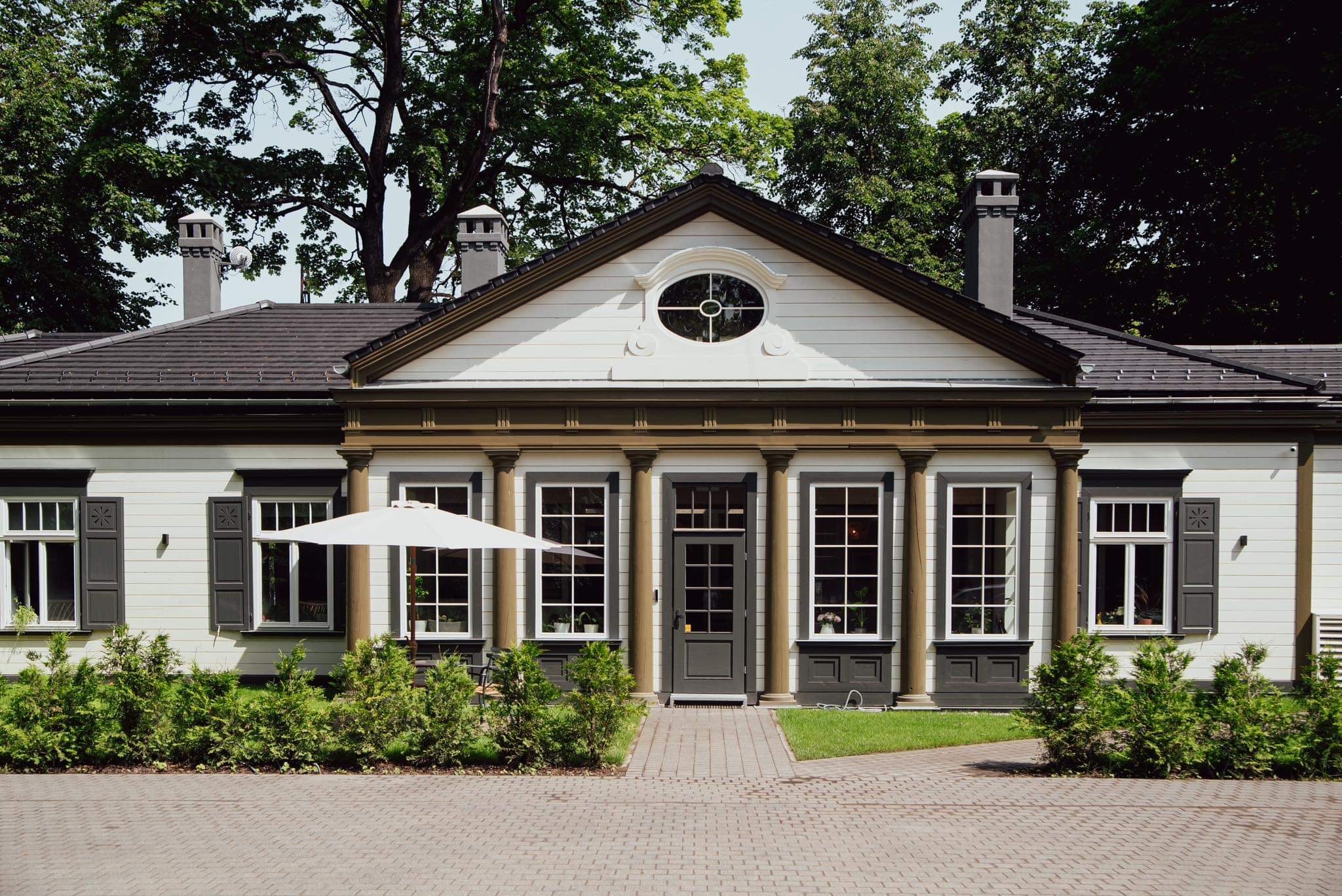
Hamann manor and Putnu dārzs in the media
Putnu dārzs has been residing in Hamann manor for a while now. Read in the media about Hamann ...
Read more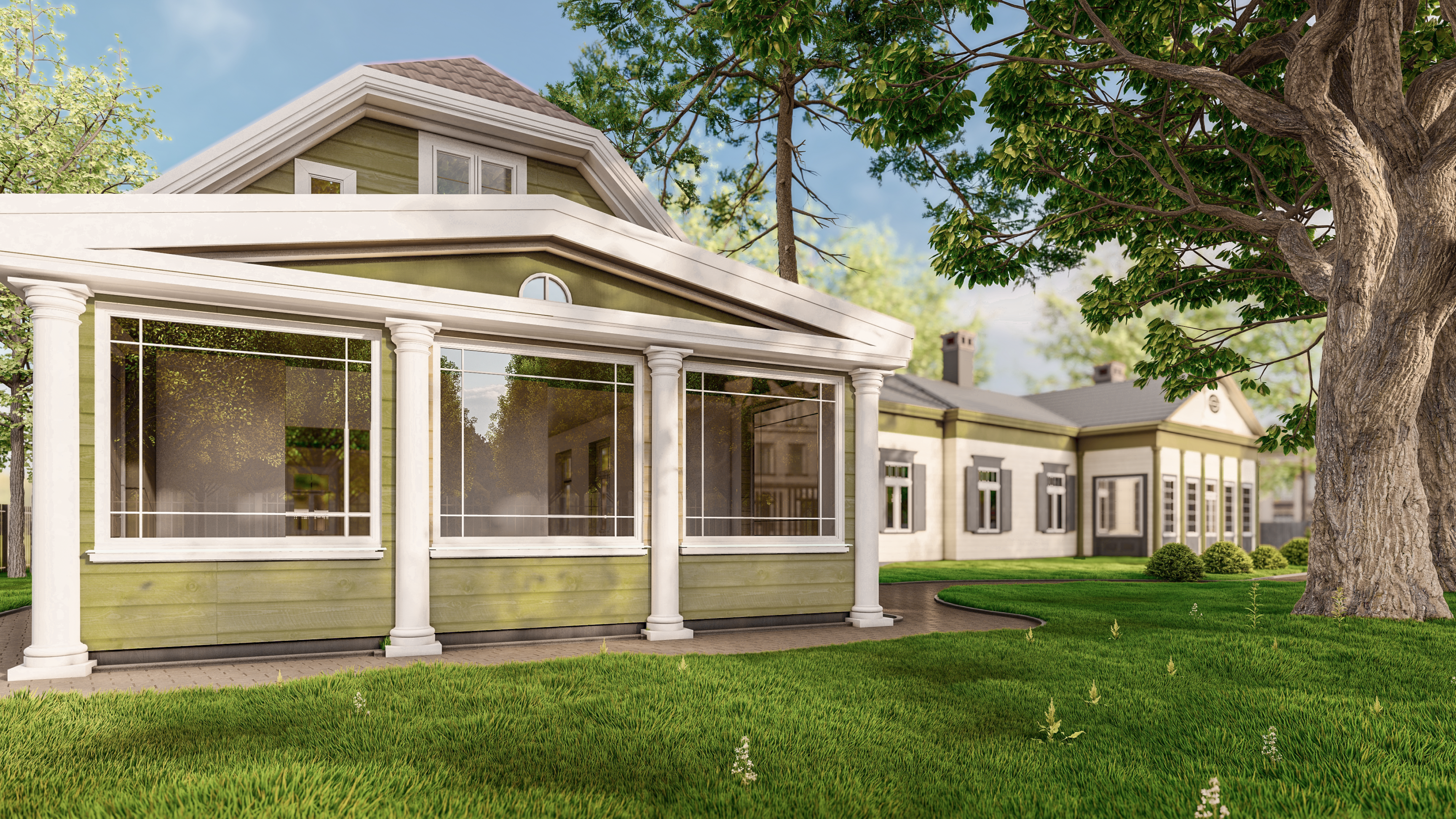
Putnu dārzs is moving to Hamann manor!
In the beginning of autumn 2022 Putnu dārzs will be moving to newly renovated Hamman manor. Hamman manor ...
Read more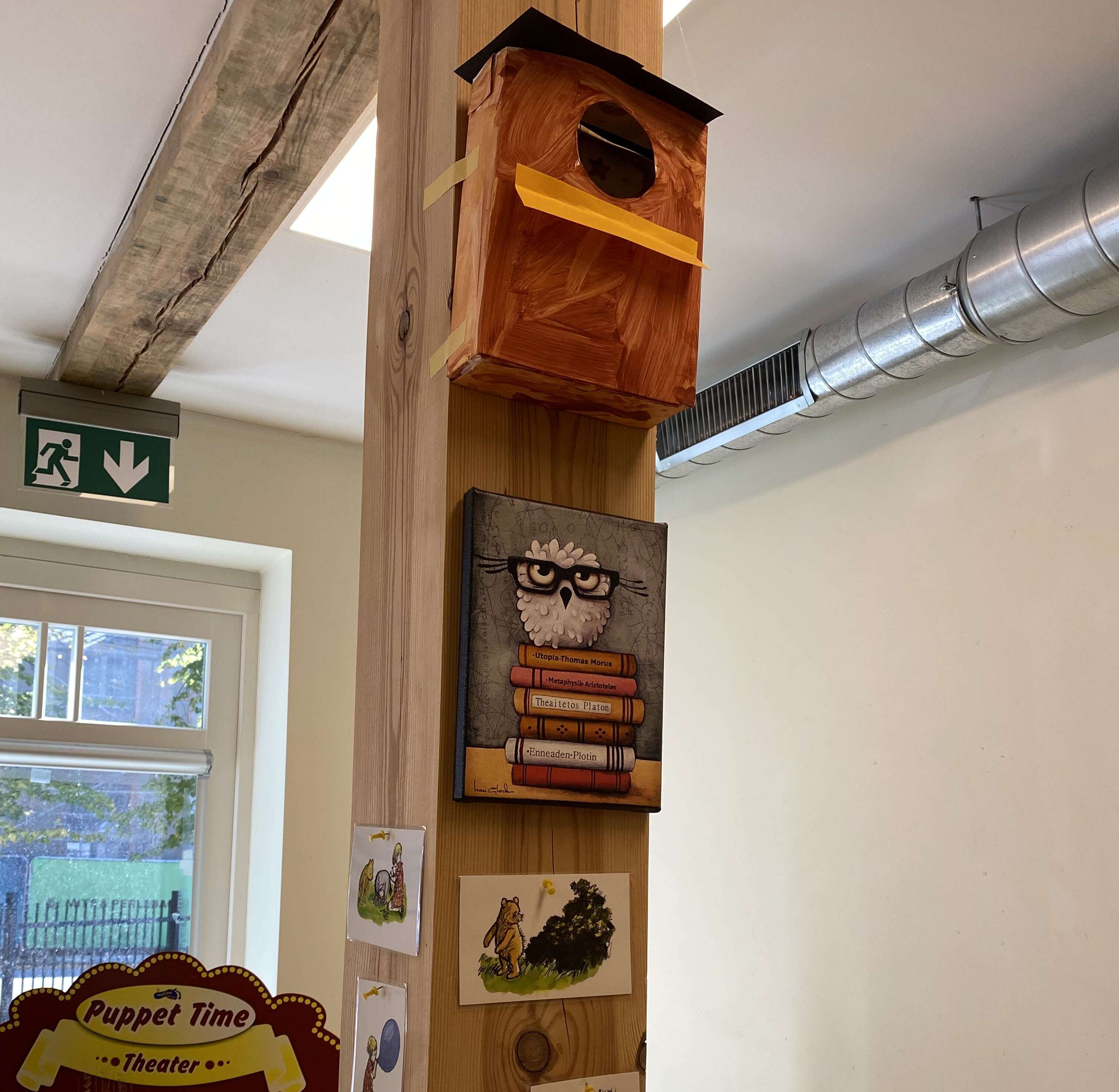
Article about the Putnu dārzs preschool in the Dienas Bizness
Read here: http://www.db.lv/tirdznieciba/pakalpojumi/mana-pieredze-izskolos-darbinieku-bernus-450430 ...
Read more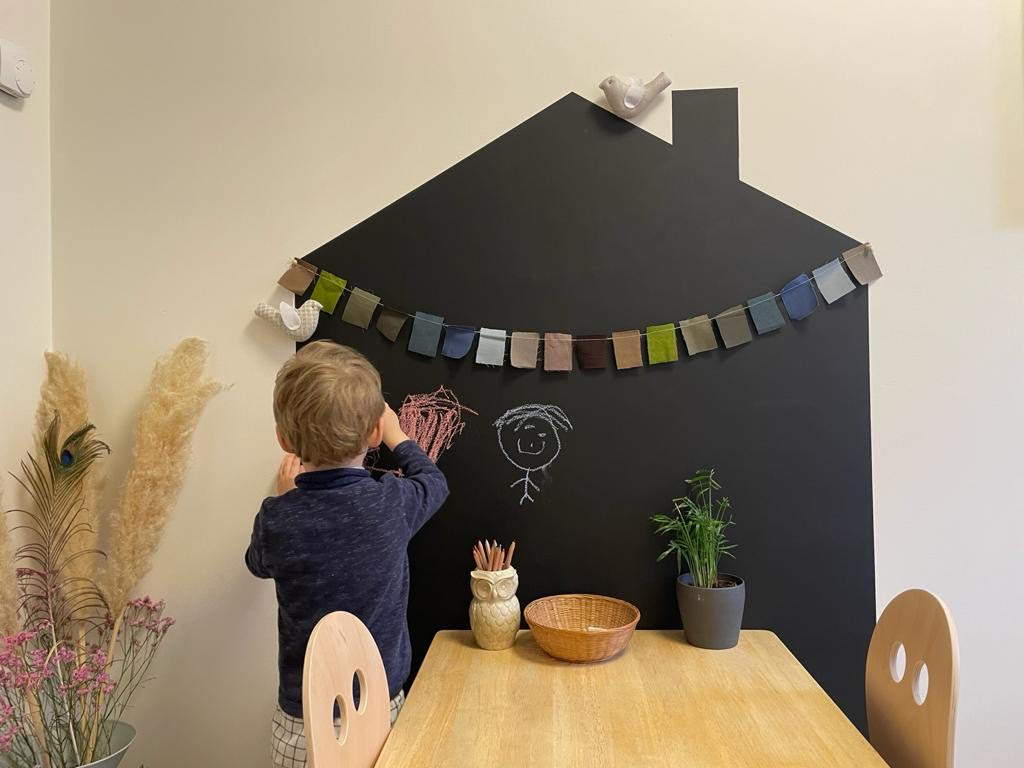
Information about Reggio Emilia in the public space
Ever since starting our work, we have been sharing information about the Reggio Emilia Approach in various ways. ...
Read more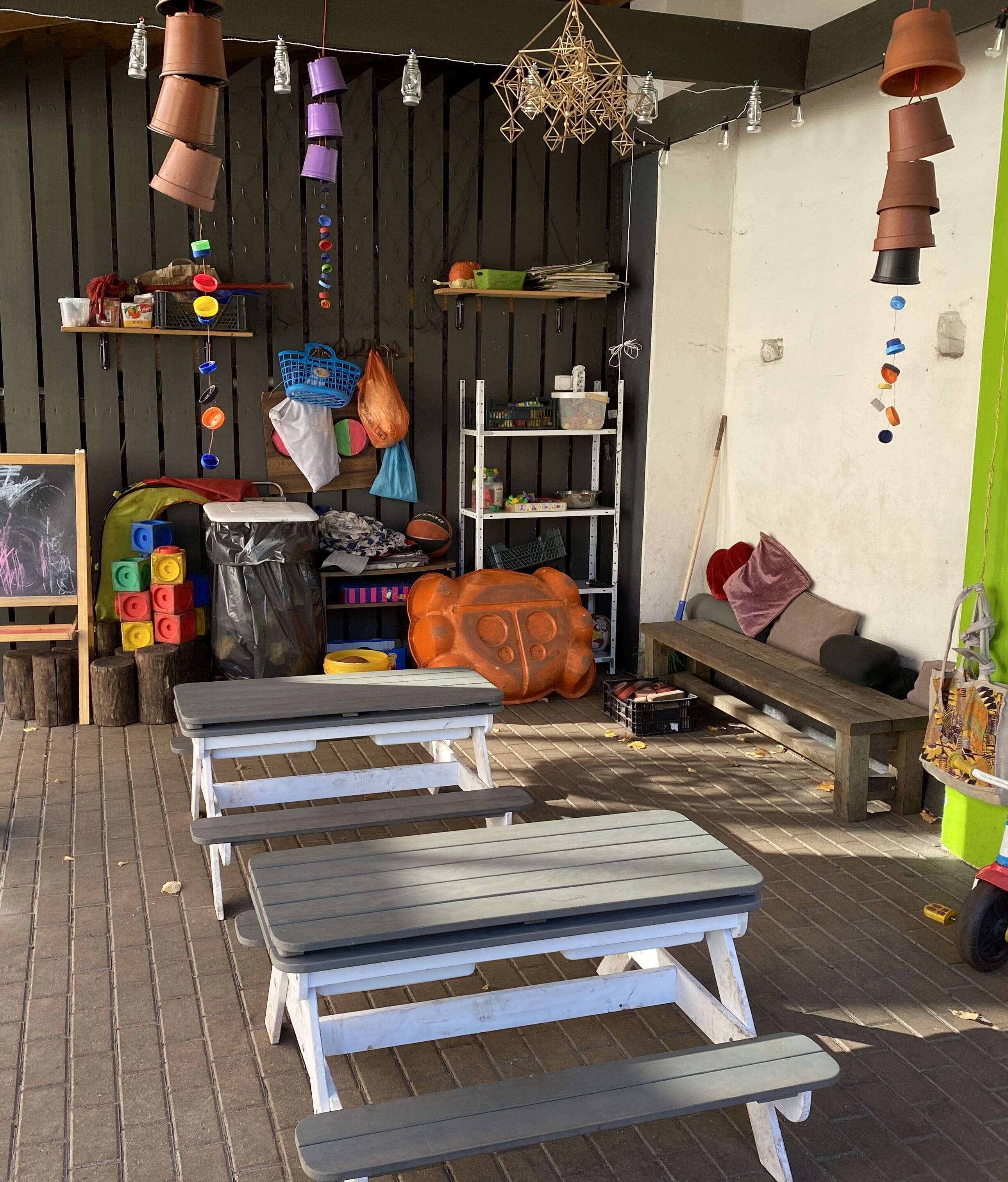
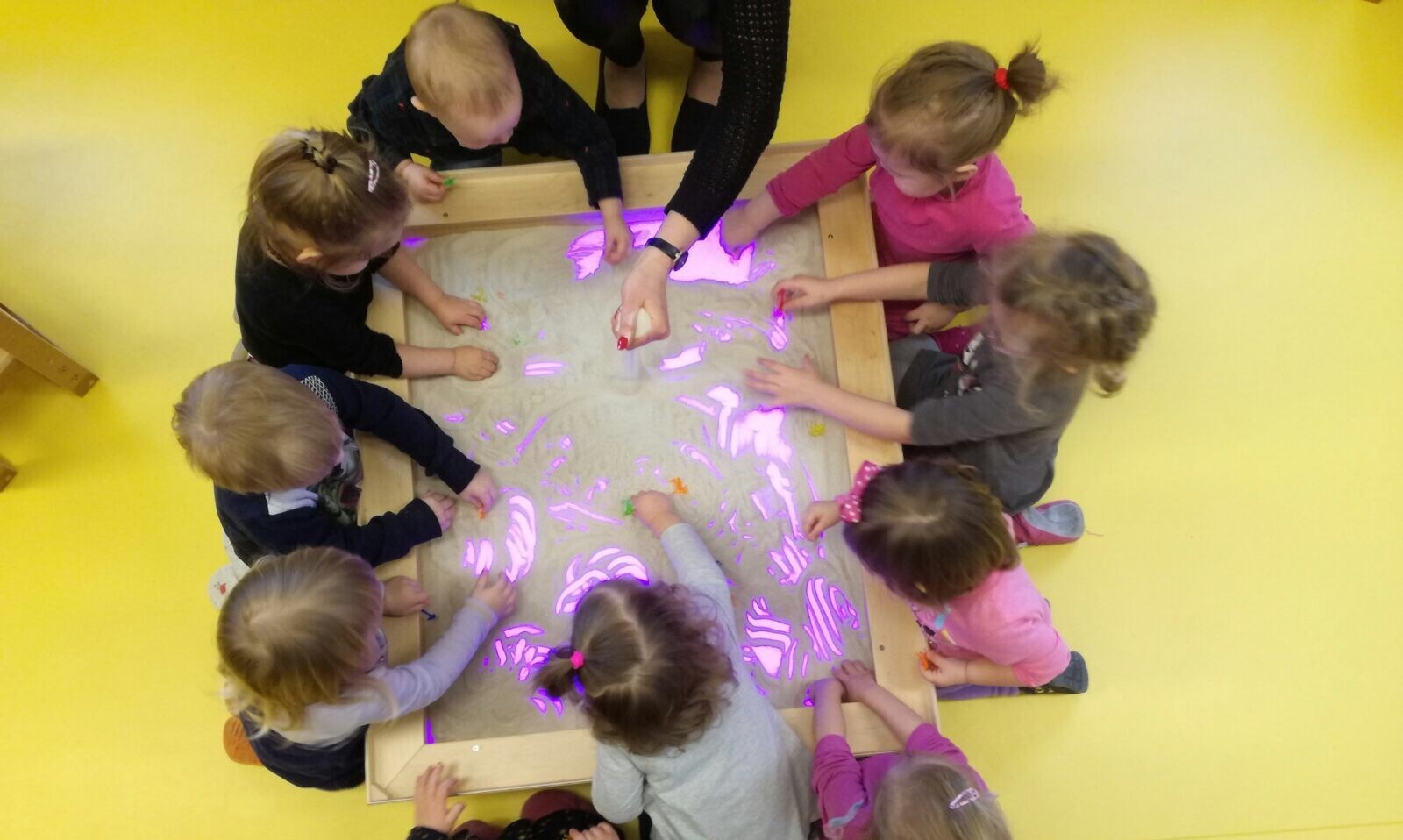
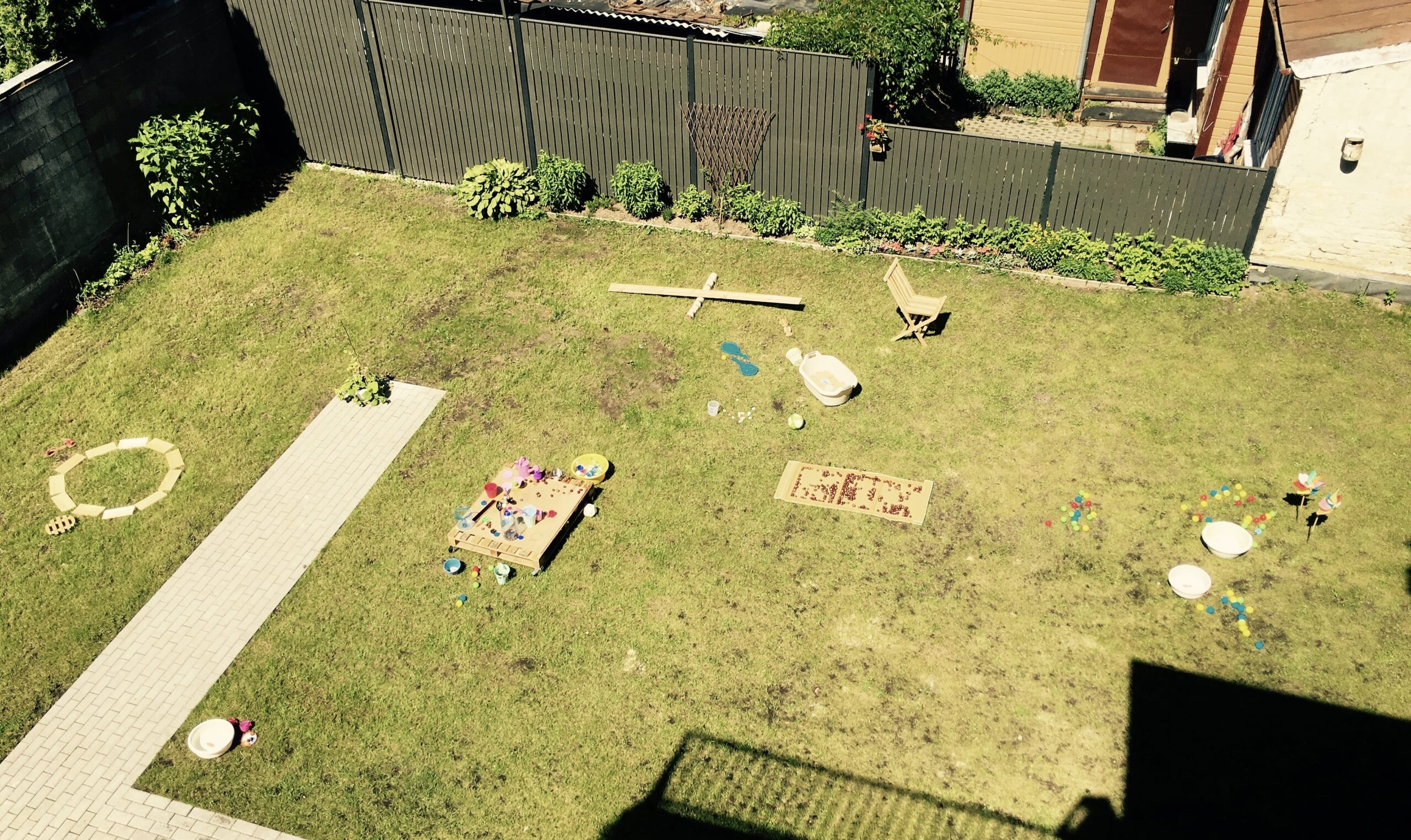
Frequently asked questions
Why the Reggio Emilia Approach?
The core activity of the founders of Putnu dārzs is related to languages and various language technologies. Since 2008, during frequent business trips to such business hubs as San Francisco and Silicon Valley, the founders of Putnu dārzs have noticed that many of their clients and colleagues choose Reggio Emilia Approaches at schools for their children. The answer to the question ‘Why the Reggio Emilia Approach?’ was that this approach provides children with a wide range of skills from an early age, teaches them to cooperate and work in a team, use their creative potential, develop soft skills, be empathetic to others and not be afraid to be different. These are the principles that motivated the founders of Putnu dārzs to open the first Reggio Emilia preschool in Latvia for the children of their employees and other parents who are interested in or passionate about this approach to teaching and its principles.
How many children are there in Putnu dārzs?
Putnu dārzs is a small preschool with no more than 55 children exploring the world at a time. Putnu dārzs employs seven full-time teachers and teaching assistants, as well as English, kids yoga, audio speech therapy and music specialists who teach classes to children several times a week.
Where is Putnu dārzs located?
Putnu dārzs is located in the heart of the Āgenskalns region of Riga, at Slokas iela 41A , in a historic Hamman manor, the renovation of which was completed in 2022. Premises were designed and based on the preschool concept of the Reggio Emilia Approach. Putnu dārzs has its own spacious outdoor area where children can be creative and enjoy freedom while playing games. We are also frequent visitors at the University of Latvia Botanical Garden that is based nearby.
Applications
The Putnu dārzs preschool welcomes children of different nationalities, origins and religions from the age of one and a half to six years.
